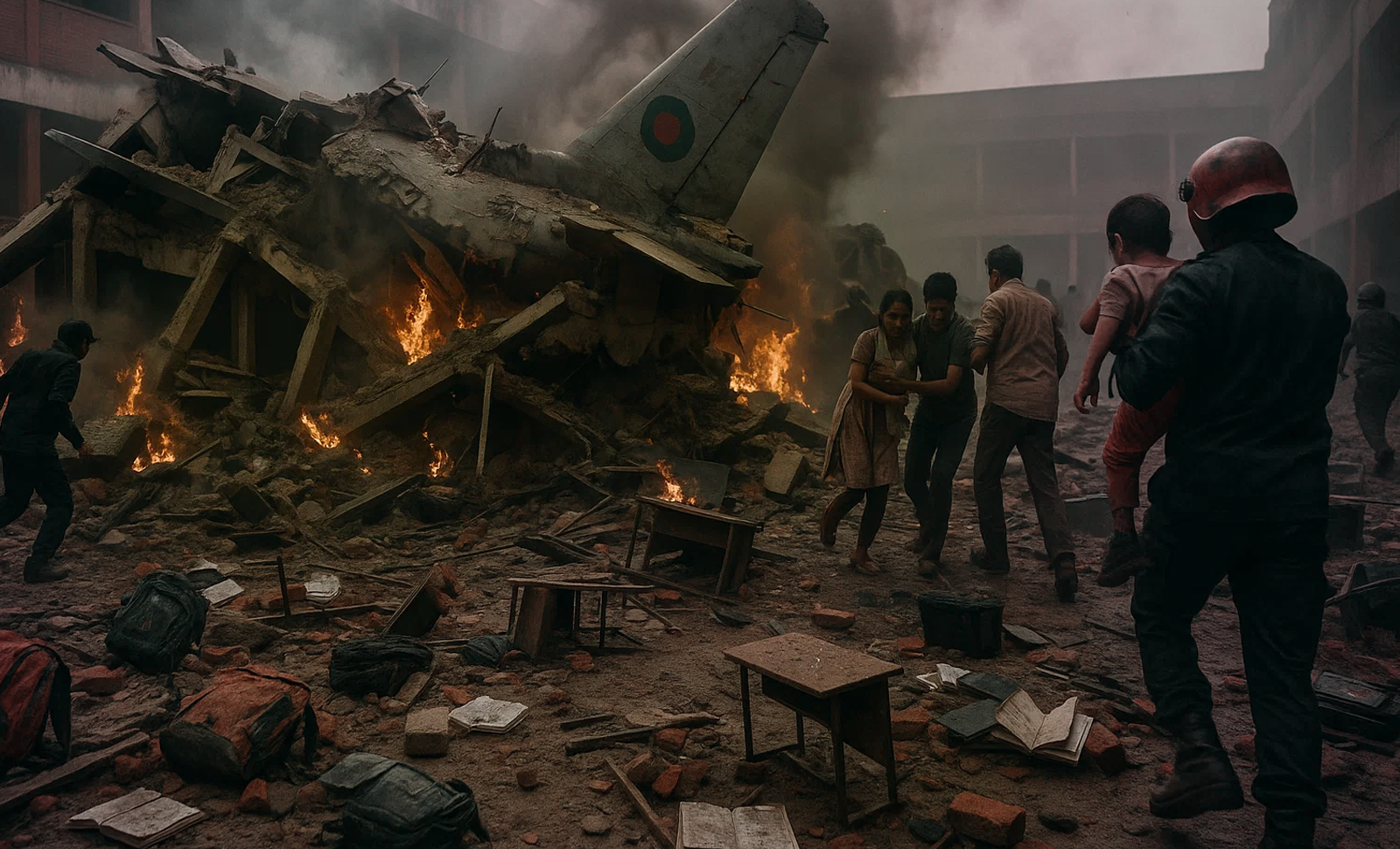Tragedy struck the heart of Bangladesh’s capital on Monday afternoon, when a Bangladesh Air Force (BAF) training jet crashed directly into a school building, killing at least 31 people and injuring over 170 others. The incident occurred around 1:06 p.m. local time, when an F-7 BGI aircraft used primarily for training missions suffered a catastrophic mechanical failure shortly after takeoff from BAF Base Bir Uttom A. K. Khandker, located in Kurmitola, Dhaka. In a desperate attempt to avoid densely populated residential areas, the pilot maneuvered the faltering jet toward what he perceived to be an open space. Tragically, it turned out to be the playground and classrooms of Milestone School and College in the Uttara area of the capital.
The jet slammed into a two-story academic block, which was full of students aged between 5 and 14 attending afternoon classes. The explosion and subsequent fire engulfed multiple classrooms, causing widespread destruction. Among the 31 confirmed dead were 25 children, a female teacher, and the pilot himself, Flight Lieutenant Towkir Islam Sagar. At least 170 more, mostly students suffered burns, broken limbs, and trauma-related injuries. Several remain in critical condition at Dhaka Medical College Hospital and other nearby facilities. Many of the young victims had been just moments away from heading home when disaster struck.
Eyewitnesses described the horror as “a deafening roar followed by fire and smoke.” Teachers rushed to evacuate children from collapsing classrooms, often carrying them in their arms or guiding them barefoot through shattered glass and rubble. Locals and school staff joined in the rescue efforts until emergency services arrived about 15 minutes later. The Bangladesh Fire Service & Civil Defence dispatched several firefighting units, while the army and Border Guard Bangladesh were quickly mobilized. A nearby metro coach was repurposed to help transport victims due to the overwhelming number of casualties.
Flight records and military sources confirmed that the pilot, Lieutenant Sagar, attempted to eject but died on impact. Defense analysts noted that the F-7 BGI is an aging aircraft model, a Chinese version of the Soviet MiG-21 that has been in service in Bangladesh since the 1980s. The model has been involved in several past crashes, raising concerns over its continued use. This incident is likely to amplify public pressure on the Air Force and government to phase out these outdated jets.
The crash has plunged the nation into mourning. Prime Minister Muhammad Yunus declared Tuesday, July 22, a national day of mourning. Flags flew at half-mast across the country, and prayer services were held in mosques, temples, and churches. In the capital, however, mourning quickly turned to protest. Thousands of students and families gathered outside the school and government buildings, demanding transparency, justice, and an immediate suspension of all low-altitude training flights over urban zones. “How many more children must die before they act?” shouted one grieving mother holding her son’s school bag.
The government has ordered a high-level investigation to determine the exact cause of the crash and assess any lapses in aviation protocol. Meanwhile, Milestone School has been shut indefinitely, and trauma counselors have been deployed to assist survivors and grieving families. Several political and civil society leaders have visited the site, urging the government to provide compensation to the victims’ families and launch a wider review of military training practices in civilian areas.
This disaster marks one of the deadliest aviation-related tragedies in Bangladesh’s history, not because of a war or natural disaster, but due to peacetime neglect and systemic failure. The impact of this crash will be felt long beyond the ruins of Milestone School. For the families of the victims, the city of Dhaka and perhaps the nation itself may never feel safe again.
















